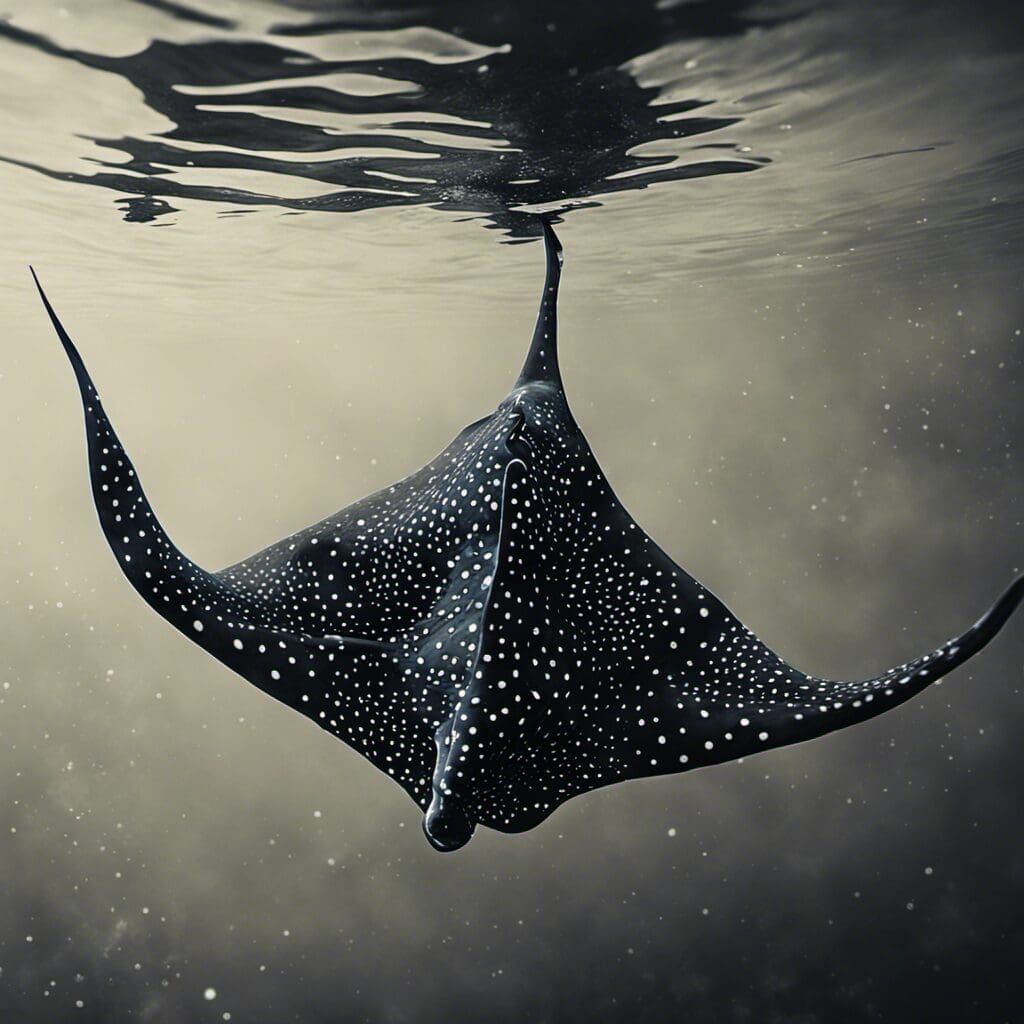Introduction
The Whitespotted Eagle Ray, scientific name Aetobatus narinari, is a unique species of ray belonging to the family Myliobatidae.
Conservation Status
According to the International Union for Conservation of Nature (IUCN), the Whitespotted Eagle Ray is currently classified as “Near Threatened”. Conservation efforts are underway to protect this species, including regulations on recreational and commercial fishing in some regions, and the establishment of marine protected areas.
Statistics
| Statistic | Average | Range |
|---|---|---|
| Length | 5ft (1.5m) | Up to 10ft (3m) |
| Weight | Approximately 50lbs (22 kg) | Can reach up to 500lbs (227kg) |
| Lifespan | N/A | N/A |
Distribution
Whitespotted Eagle Rays can be found in tropical oceans worldwide, including the Atlantic, Pacific, and Indian Oceans. They do not typically display any prominent migration patterns, but may move in response to changes in water temperature.
Habitats
These rays are commonly found in nearshore waters and coral reefs, frequently at depths of less than 80 feet. They adapt well to a variety of water temperatures, making their way into both warm tropical waters and cooler temperate regions.
When and Where to See
Whitespotted Eagle Rays can be spotted year-round near coastal reefs, often during daylight hours when they are most active.
Best Fishing Locations
- Bahamas
- Florida Keys, USA
- Great Barrier Reef, Australia
- Hawaii, USA
- Red Sea, Egypt/ Saudi Arabia
- Andaman Sea, Thailand
Fishing for Whitespotted Eagle Ray requires a large heavy-duty rod and reel due to their size and strength. Sight fishing is a popular method for targeting this species.
How to Catch
For bait, squid or cut fish can be used effectively. The best technique for catching is by sight fishing or bottom fishing.
Identification Guide
Notable for their dark dorsal surfaces covered in white spots or rings, Whitespotted Eagle Rays are quite distinct. They also have a long, whip-like tail and a flat, wide body typical of rays.
Culinary
While not commonly eaten, Whitespotted Eagle Ray meat is said to have a mild, slightly sweet flavor. It can be grilled or baked and served with a variety of sauces.
Additional Information
These rays are known to be solitary creatures except during mating season. Their diet primarily consists of invertebrates such as clams, oysters, and shrimp. Predators include large sharks and humans. They are particularly threatened by habitat loss and fishing pressure.
Historically, some cultures have considered these rays to be symbols of grace and freedom due to their fluid, birdlike movements.

